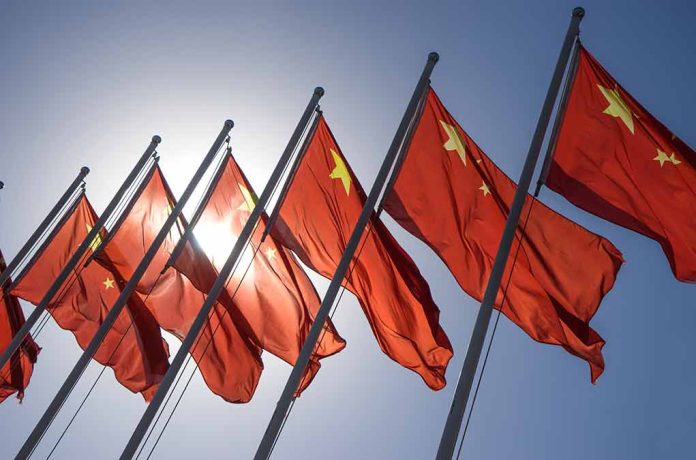
Japan sends a powerful message to Beijing as its destroyer Takanami navigates the Taiwan Strait just days after Chinese jets threatened Japanese aircraft in international airspace.
Key Takeaways
- The Japanese destroyer Takanami sailed through the Taiwan Strait on June 12, marking Japan’s third known transit through these contested waters in the past year.
- This bold naval maneuver came directly after Chinese fighter jets flew dangerously close to a Japanese patrol plane over the Pacific Ocean.
- Following the Taiwan Strait passage, the Takanami conducted joint naval exercises with the Philippine Navy in the South China Sea, further asserting Japan’s regional security presence.
- China’s military tracked and monitored the Takanami throughout its entire 10-hour transit, highlighting the heightened tensions between the two nations.
- Japan has strategically shifted its defense posture to assert freedom of navigation alongside the United States amid China’s increasingly aggressive maritime claims.
Japan’s Strategic Maritime Movement Through Contested Waters
Japan’s Maritime Self-Defense Force (MSDF) destroyer Takanami sailed through the Taiwan Strait on June 12, spending over 10 hours traversing the sensitive waterway that separates China from Taiwan. The transit began from the East China Sea and represents a significant development in Japan’s increasingly assertive stance regarding freedom of navigation in the region. This passage marks the third known transit by an MSDF vessel through these contested waters within the past year, following previous movements in September 2024 and February 2025, demonstrating Japan’s consistent commitment to challenging China’s territorial claims.
The timing of this naval movement is particularly noteworthy as it came directly after a dangerous encounter where Chinese J-15 fighter jets approached Japanese surveillance aircraft at an unsafe distance over the Pacific Ocean. Despite the strategic importance of these naval operations, the Japanese government has maintained its standard protocol of not officially acknowledging these activities, allowing the actions to speak for themselves while avoiding direct diplomatic confrontation with Beijing. Chinese military forces responded by tracking and monitoring the Takanami throughout its entire transit, further highlighting the tension between the two regional powers.
Expanding Military Cooperation in the South China Sea
Following its passage through the Taiwan Strait, the destroyer Takanami proceeded to waters off the Philippines’ main island of Luzon, where it participated in joint maritime exercises with the Philippine Navy in the South China Sea. This strategic sequencing of naval operations demonstrates Japan’s comprehensive approach to asserting its presence across multiple flashpoints in the region where China has made expansive territorial claims. The joint exercises represent the growing military cooperation between Japan and the Philippines, both of whom face increasing territorial pressures from China’s maritime expansion.
These naval maneuvers reflect Japan’s evolving defense posture under President Trump’s encouragement for allies to take greater responsibility for their regional security. Japan has increasingly aligned itself with the United States and other democratic nations in asserting freedom of navigation principles in contested waters. This shift represents a significant departure from Japan’s traditionally more cautious approach to regional security matters, as it now more openly challenges China’s claims to dominance in the Western Pacific through concrete military operations rather than mere diplomatic statements.
Rising Tensions Between Japan and China
The Takanami’s transit comes amid escalating maritime and aerial confrontations between Japanese and Chinese forces. The recent incident involving Chinese fighter jets approaching Japanese surveillance aircraft dangerously close over the Pacific Ocean represents just one example of China’s increasingly aggressive posture toward Japan. These confrontations have become more frequent as China continues to pressure Taiwan, which it considers a breakaway province despite the island’s democratic self-governance, and as Japan strengthens its security partnerships throughout the Indo-Pacific region.
Japan’s increased willingness to conduct freedom of navigation operations through the Taiwan Strait serves as a calculated warning to China regarding its pressure tactics against Taiwan. By joining the United States and other nations in these transit operations, Japan signals its support for international maritime norms and its opposition to unilateral attempts to change the status quo in the region. This strategic stance aligns with President Trump’s emphasis on maintaining a free and open Indo-Pacific region in the face of China’s territorial ambitions and military modernization programs that directly challenge American and allied interests.



